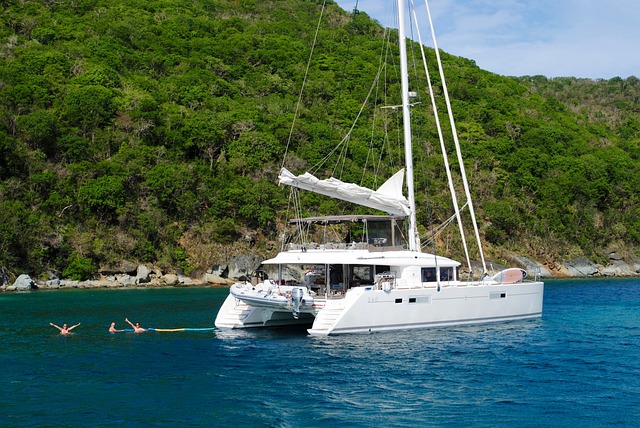

Chartering a boat with Yasido.com is as easy as hiring a car or a vacation rental. Once you have made the choice to spend your holiday on a boat you will need to consider all the different factors to create a truly unforgettable sailing experience tailored to your needs and expectations!
Catamarans offer a comfortable and safe sailing experience, making them a popular choice for families, couples, and others who prioritize comfort and safety while on the water. Catamaran fans often appreciate the comfort and safety features that catamarans offer. Choosing between a catamaran and a yacht is a common question among sailors, as both types of vessels have their own advantages. Different catamaran models may have variations in hull shape, size, weight distribution, and other features that can affect their performance and characteristics. So let us take a closer look at the characteristics of the catamaran hull - not just one, but two hulls of equal size!

Generally speaking, the hull is the main structural component of the boat's body that sits in the water. This is part of the vessel that provides buoyancy, stability, flotation, and structural integrity and last but not least - it houses various systems and accommodations. The hull is typically constructed from a durable and watertight material such as fiberglass, aluminum, steel, or carbon fiber composite. It is designed to displace water and support the weight of the boat, while also providing a streamlined shape to minimize resistance and improve performance through the water.
The shape and design of the hull play a crucial role in the sailing characteristics of the yacht or catamaran. The two parallel hulls of the catamaran are equally spaced apart and are connected by a deck or a bridging structure - the hydrodynamic resistance of a catamaran hull refers to the forces that act upon the hull as it moves through the water and is crucial for the optimization of the performance and efficiency of a catamaran. The wide distance between the two hulls provides a large base, reducing the tendency to roll or heel to one side. The two hulls tend to dampen the motion caused by waves, resulting in reduced rolling and pitching. This stability and reduced motion make catamarans popular choices for those seeking a more comfortable and enjoyable sailing experience. The twin-hull design of catamarans reduces drag and allows for increased speed and efficiency, especially when sailing downwind. The reduced resistance in the water translates to better performance and higher speeds.

Catamaran's shallow draft, often underrated safety advantage, enables them to access shallower areas, such as coastal regions, lagoons, or anchorages that may be inaccessible to deeper-draft monohulls. Furthermore, the dual-hull design of a catamaran provides a wider deck area and greater interior volume - this extra space allows for larger cabins, living areas, and storage compartments.
Overall, catamarans can offer a comfortable and safe sailing experience, making them a popular choice for families, couples, and others who prioritize comfort and safety while on the water. Ultimately, the decision between a catamaran and a monohull comes down to personal preference, intended use, and budget. If you're planning a family or group trip and prioritize space and stability, a catamaran may be the better option.